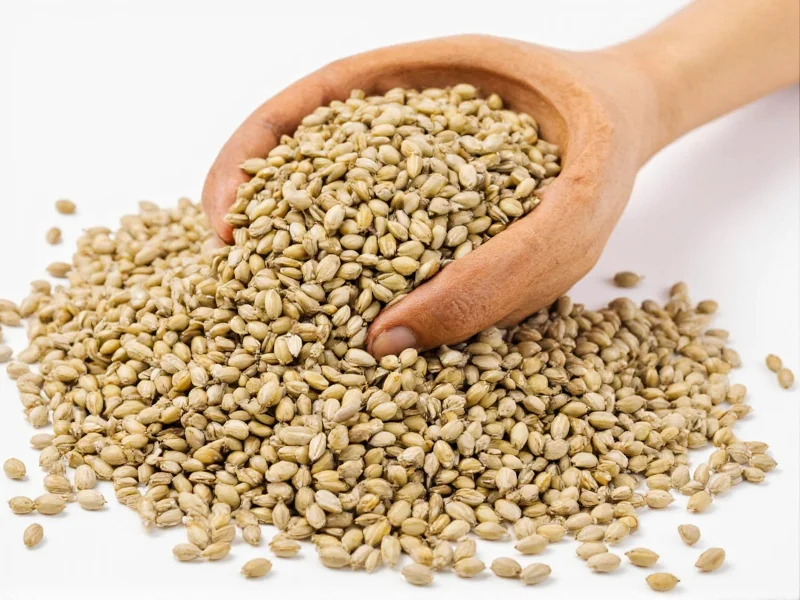For centuries, caraway seeds have been valued across European, Middle Eastern, and North African cuisines for their unique flavor profile and practical applications. Beyond their distinctive taste, these crescent-shaped seeds serve multiple purposes in both culinary and wellness traditions. Understanding how to properly use caraway seeds can transform ordinary dishes and support digestive health naturally.
Culinary Applications of Caraway Seeds
Caraway seeds bring their characteristic flavor to numerous dishes worldwide. The most famous application appears in traditional German and Eastern European rye bread, where the seeds create that signature taste beloved by bread enthusiasts. But their culinary versatility extends far beyond baked goods.
Baking and Bread Making
When incorporated into bread dough, caraway seeds release their essential oils during baking, creating an aromatic experience that defines many traditional European breads. The standard ratio is 1-2 tablespoons of seeds per loaf of rye bread. For optimal flavor, many bakers toast the seeds lightly before adding them to dough, which intensifies their warm, slightly peppery notes.
Savory Dishes and Main Courses
Chefs frequently use caraway seeds in hearty stews, sauerkraut, and cabbage dishes where their flavor complements fermented and earthy ingredients. In Hungarian goulash and German sauerbraten, caraway provides a subtle background note that balances richer meat flavors. The seeds work particularly well with root vegetables, potatoes, and cheese-based dishes.
| Dish Type | Recommended Amount | Preparation Tip |
|---|---|---|
| Rye bread (1 loaf) | 1-2 tablespoons | Toast seeds before adding to dough |
| Sauerkraut (4 servings) | 1 teaspoon | Add with onions at beginning of cooking |
| Beef stew (6 servings) | 1.5 teaspoons | Crush slightly before adding |
| Carrot soup (4 servings) | 1 teaspoon | Add whole seeds early in cooking process |
Traditional Medicinal Uses
Historically, caraway seeds have served as natural digestive aids across various cultures. Many traditional medicine systems recommend chewing a small amount of seeds after meals to alleviate bloating and gas. The active compounds in caraway, particularly carvone, may help relax gastrointestinal muscles and reduce spasms.
For centuries, herbalists have prepared caraway tea by steeping one teaspoon of crushed seeds in hot water for 10-15 minutes. This simple preparation remains popular for soothing upset stomachs and supporting healthy digestion. While modern research continues to investigate these traditional uses, preliminary studies suggest caraway may have antimicrobial properties and potential benefits for digestive health.
Practical Usage Tips
Understanding how to work with caraway seeds makes a significant difference in your culinary results. Whole seeds maintain their flavor longer than ground caraway, which loses potency quickly. For maximum flavor impact, lightly toast whole seeds in a dry skillet over medium heat until fragrant (about 2-3 minutes), then use them whole or grind them fresh.
When substituting caraway in recipes, consider these alternatives based on the dish:
- Fennel seeds - Similar licorice notes, use 1:1 ratio
- Dill seeds - More herbaceous, use slightly less
- Anise seeds - Stronger licorice flavor, use half the amount
- Cumin - Earthier profile, use sparingly as substitute
Storage Recommendations
To preserve caraway seeds' flavor and potency, store them properly. Keep whole seeds in an airtight container away from light and heat. Properly stored, they maintain optimal flavor for 1-2 years. Ground caraway loses its potency much faster—typically within 6 months—so buying whole seeds and grinding them as needed delivers superior results.
For extended storage, consider keeping caraway seeds in the refrigerator or freezer. This approach particularly benefits those who use spices infrequently, as the cooler temperatures significantly slow the degradation of essential oils that give caraway its distinctive flavor.
Cultural Significance Across Regions
Caraway seeds feature prominently in various cultural food traditions. In Germany, they're essential for traditional rye bread and sauerkraut. Scandinavian cuisines incorporate them into cheese and potato dishes. Middle Eastern recipes often use caraway in meat preparations and spice blends. Each region has developed unique applications that highlight how this versatile seed adapts to different culinary contexts while maintaining its distinctive character.
FAQ Section
What are the primary culinary uses for caraway seeds?
Caraway seeds are most commonly used in rye bread, sauerkraut, cabbage dishes, stews, and potato recipes. They add distinctive flavor to Scandinavian cheese, German sausages, and Middle Eastern meat dishes. The seeds work particularly well with earthy ingredients like root vegetables and complement fermented foods beautifully.
Can caraway seeds help with digestion?
Yes, caraway seeds have been used traditionally as a digestive aid. Chewing a small amount after meals may help reduce bloating and gas. The active compound carvone appears to relax gastrointestinal muscles. Many people prepare caraway tea by steeping crushed seeds in hot water to soothe upset stomachs, though scientific research on these effects continues.
How should I store caraway seeds to maintain freshness?
Store whole caraway seeds in an airtight container away from light and heat. Proper storage preserves their flavor for 1-2 years. For extended freshness, keep them in the refrigerator or freezer. Ground caraway loses potency much faster (within 6 months), so buying whole seeds and grinding them as needed delivers superior flavor in your cooking.
What's the difference between using whole and ground caraway seeds?
Whole caraway seeds maintain their flavor longer and provide texture in dishes. They're ideal for breads and slow-cooked dishes where they can gradually release flavor. Ground caraway offers more immediate flavor impact but loses potency quickly. For best results, toast whole seeds lightly then grind them fresh just before use to maximize their aromatic qualities in your recipes.
What can I use if I don't have caraway seeds?
Fennel seeds make the closest substitute with similar licorice notes (use 1:1 ratio). Dill seeds offer a more herbaceous alternative (use slightly less). Anise seeds have stronger licorice flavor (use half the amount). Cumin provides an earthier profile but use sparingly as it has a distinctly different flavor profile than caraway.











 浙公网安备
33010002000092号
浙公网安备
33010002000092号 浙B2-20120091-4
浙B2-20120091-4